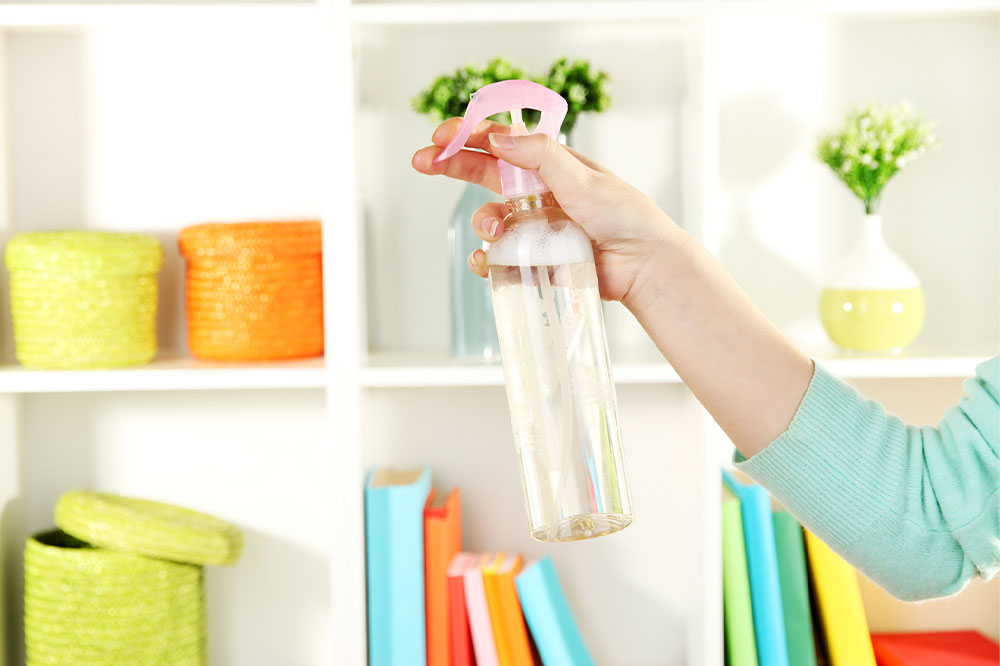7 regular use household products harmful to lung health

Many adults in the country experience one or more types of lung and respiratory disorders, often due to the presence of carcinogens in the atmosphere. In some cases, symptoms may even appear during early childhood. These harmful particulate matters can impact breathing and other respiratory functions. Unfortunately, many people are unaware of the risks posed by common cleaning and hygiene products used in their households. Here are seven such products that can potentially cause lung problems:
Air fresheners
Aerosol sprays containing fragrances are commonly used around the house, especially inside the washroom. And depending on the size of the family, one might be using these products repeatedly. So, the exposure rate for air fresheners is high, and someone with existing lung problems will suffer from respiratory issues after coming in contact with such products. That’s mainly because fragrances contain scents added to compressed gases inside the can. Many of these scents are ethyl based and are quite toxic. Even the slightest exposure can worsen symptoms of respiratory and lung disorders, triggering a flareup.
Oven cleaners
Baking and grilling ovens collect a lot of the soot and fumes released while cooking. Oven cleaners effectively disintegrate the debris that collects inside the oven. It’s easy to scrub off what remains effortlessly using a steel wool scrubber. However, oven cleaners contain strong volatile organic compounds that trigger severe lung and respiratory problems. One will start to experience coughing, shortness of breath, and even chest pain with direct exposure to the fumes. The particulate matter inside these cleaners irritates the airways and tiny sacs inside the lungs that store and release oxygen.
Bleach
A homemade bleach solution is one of the cheapest disinfectants to make using just a few ingredients. The local supermarket or pharmacy will sell concentrated bleach that can be diluted at home by mixing water to create a potent surface cleaner. However, bleach releases strong fumes that are extremely toxic and should not be inhaled directly. Children are at a much higher risk compared to adults, especially to the chlorine fumes. These vapors worsen symptoms linked to conditions like asthma or chronic obstructive pulmonary diseases that affect one’s breathing. Long-term exposure to bleach also increases the risk of cancer.
Furniture and floor polish
Polish is another commonly used surface cleaner available in a concentrated form. Household furniture made from wood and other organic materials requires a coat of polish to restore that shine and look. However, the fumes contain some of the most poisonous substances known to man, added to the polish merely to increase the potency of the product. Furniture polish poisoning is a serious condition caused by the liquid variants of the cleaner. Someone already suffering from common lung and chronic respiratory disorders is at risk of having a pneumothorax (collapsed lung) with the minutest exposure to the toxin. Vision problems, fluid buildup in the lungs, and other breathing difficulties are all signs of poisoning.
Detergents and dishwashing liquids
Even some commercial-grade detergents used for washing clothes contain toxic compounds that shouldn’t be inhaled. Detergents are heavily laced with chemicals, disinfectants, and abrasive fluids designed to wash and clean clothes. The strong fumes are worse than secondhand exposure to other carcinogens released in the surroundings. Also, dishwashing fluids contain concentrated compounds formulated to scrub off dirt and debris from utensils and cookware products exposed to high heat. Inhaling these fumes will also irritate the airways and cause discomfort.
Disinfectants for the washroom
Disinfectants contain strong compounds used to neutralize any bacteria and lower the risk of infections. One of the volatile organic compounds used in the formulation of such cleaning products is ammonia. Inhaling fumes released by these chemical products can trigger and worsen respiratory symptoms. The concentration of ammonia in these products can cause nasal irritation and a burning sensation experienced in the throat and respiratory tract. Further, inhaling ammonia increases the risk of fluid buildup in the lungs, commonly caused by bronchiolar or alveolar edema.
Beauty products
Even commonly used beauty and wellness products like hairsprays, aerosol perfumes, antiperspirants, talcum powders, and other products that contain fumes increase airway irritation. Inhaling these fumes regularly will cause the symptoms of known conditions like asthma, common COPD, and lung diseases to flare up. Some aerosol products also increase the risk of cancer due to inhaling a certain type of carcinogen present in the products.



